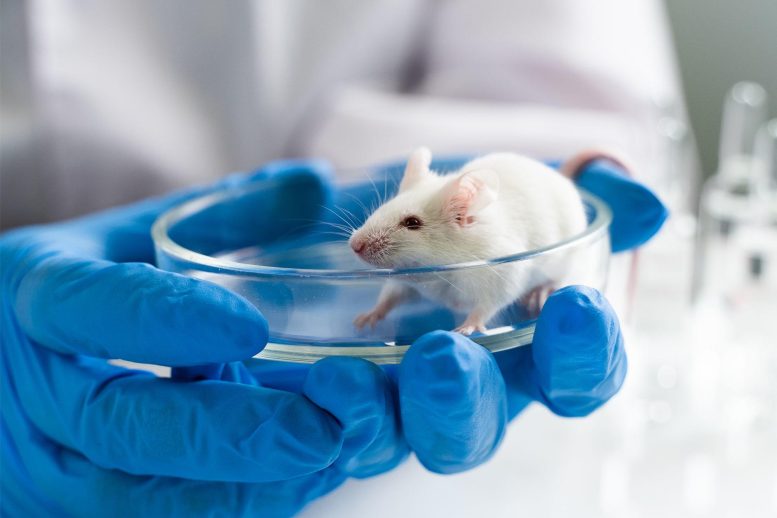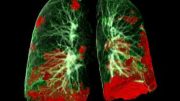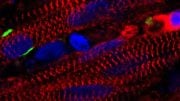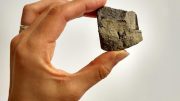
Mouse studies are scientific investigations that use mice as model organisms to understand biological processes and disease mechanisms. Mice are widely used in research because they are mammals, share many similarities with humans, and are easy to maintain in a laboratory setting.
The results have important implications for surgical procedures, computer simulations of the musculoskeletal system, muscle function, and rehabilitation.
In the field of science, conclusions derived from studying small creatures are often generalized and applied to humans, despite the significant size difference. New research, led by Shirley Ryan AbilityLab and published in the Journal of Physiology, is the first to directly measure human muscle contractile properties and demonstrates that basing such information on animal measurements leads to inaccurate predictions.
This breakthrough initially emerged when scientists employed a specialized surgical technique, transplanting a human patient’s gracilis muscle (a large thigh muscle) into the arm to recover elbow flexion following a brachial plexus injury. This allowed them to directly measure muscle properties and evaluate architectural and scaling predictions—a rare chance, as obtaining such measurements is highly invasive and can only be done during extensive surgery for unrelated reasons. Contrary to previous beliefs based on conventional animal anatomical models, they discovered that the gracilis muscle functions with relatively short fibers working in parallel rather than long fibers. This finding was consistently replicated throughout the study.
Specifically, they established that human muscle fiber-specific tension is 24% smaller than the gold standard that has been used traditionally, as determined from small mammals. Additionally, they determined that the average gracilis optimal fiber length is about half of what had been understood to be the case based on detailed anatomical studies of muscles from cadavers.
“There’s a reason scientists study animals,” said Richard L. Lieber, Ph.D., senior author and chief scientific officer at Shirley Ryan AbilityLab. “Direct measurements of human muscle contractile properties don’t occur because they require muscles to be cut out of the body. As a result, scientists must study animal muscles and then make predictions as they relate to humans by scaling numbers according to size.”
This study shows, for the first time, that such extrapolation is simply not accurate. The gracilis serves as a good test case because of its straightforward properties. Because its measurements weren’t accurately predicted, it’s likely measurements for all muscle systems are incorrect, according to the researchers.
“When extrapolating from mice to humans, some scaling laws work beautifully, such as when measuring cardiac output and blood pressure,” said Dr. Lieber, who also is a professor at Northwestern University and senior research scientist at the Edward Hines Jr. VA Hospital. “However, through this study, we’ve demonstrated that the same scaling principles don’t apply in muscle, and are in fact highly nonlinear. Moving forward, we shouldn’t conduct a mouse muscle study and then simply multiply by body size to predict human properties.”
These findings have significant implications across disciplines, including surgery, computational musculoskeletal modeling, muscle performance, and rehabilitation. For example, predicting how a muscle will perform after a surgical procedure is critical. Many procedures (e.g.,
tendon lengthening, tendon transfer, surgical release) alter muscle length and force. However, currently only musculoskeletal models — which are based on indirect measurement methods and extrapolate animal data to human sizes — can be used to predict surgical outcomes.
Dr. Lieber, for one, is not deterred by the study findings.
“Discovering that our anatomical predictions for human muscle are wrong is big news for human science,” he said. “It is critical that we, as scientists, continually test our assumptions. Now, this knowledge sets us on the path to better understand the performance, adaptation, and rehabilitation potential of muscle.”
Reference: “Direct intraoperative measurement of isometric contractile properties in living human muscle” by Benjamin I. Binder-Markey, Lomas S. Persad, Alexander Y. Shin, William J. Litchy, Kenton R. Kaufman and Richard L. Lieber, 11 March 2023, The Journal of Physiology.
DOI: 10.1113/JP284092









Be the first to comment on "Humans Are Not Just Big Mice: Current Anatomical Predictions for Muscle Are Wrong"